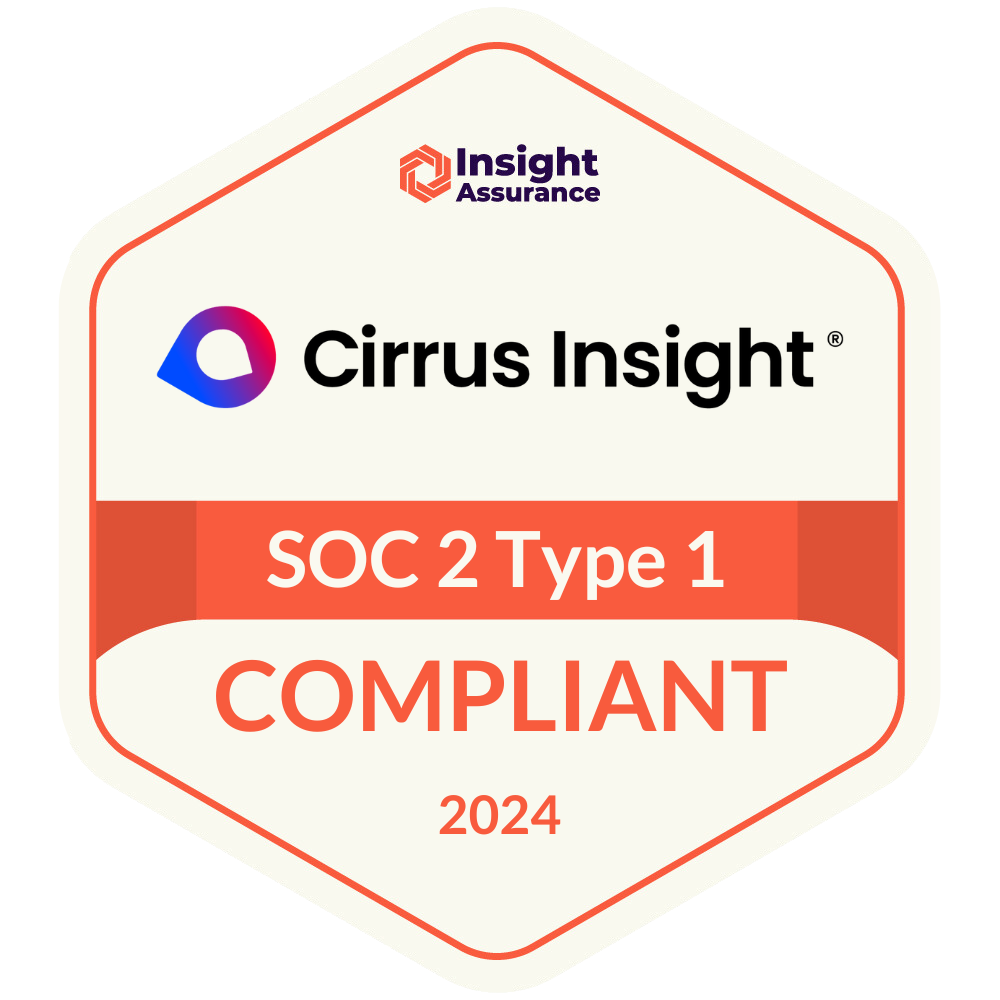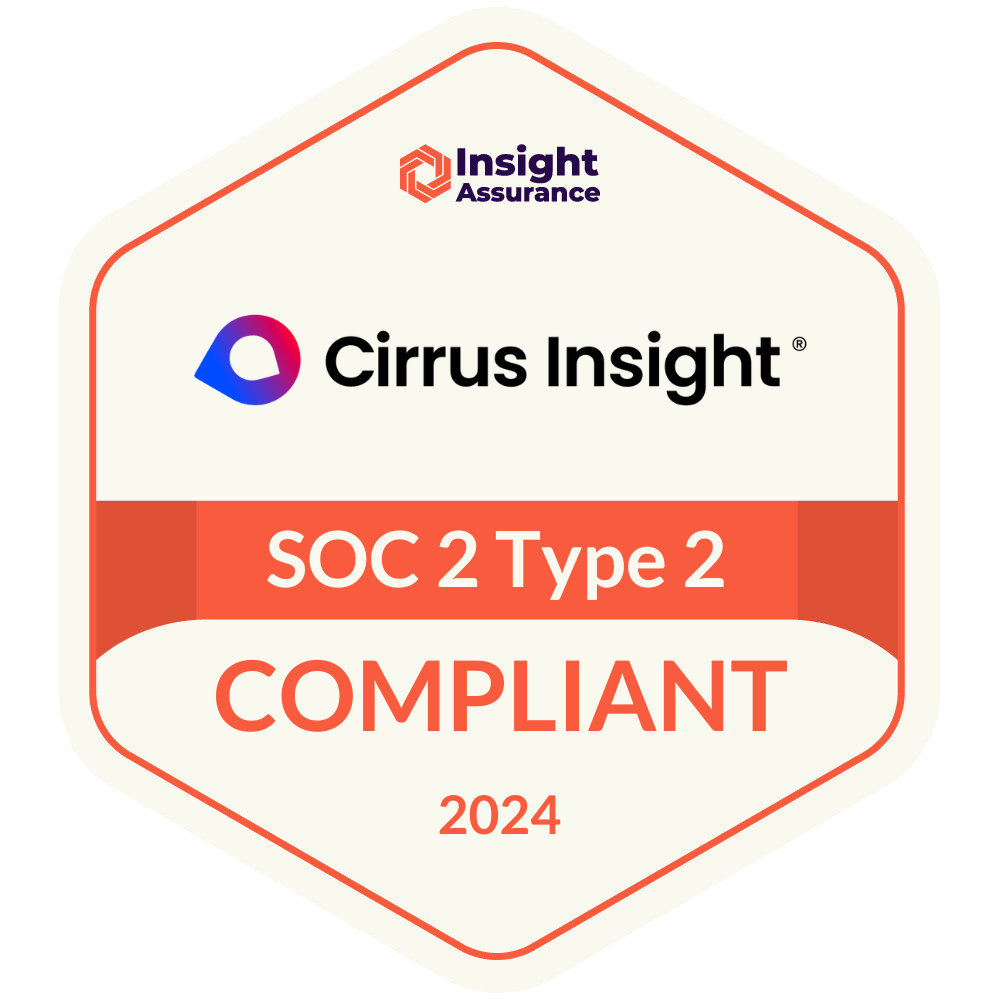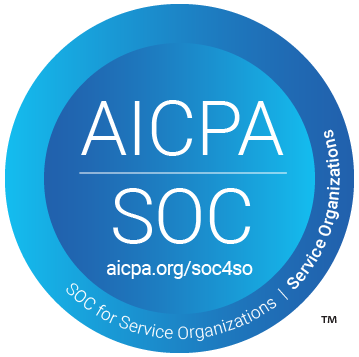- Solutions
-
Products
-
Resources
Sales Automation Tools | Cirrus Insight by Kristi Campbell View all Blog Posts >Get the App, Get the Sidebar, & Get Your Trial Going HereUnleash limitless growth opportunities by partnering with Cirrus Insight.
- Pricing
25 Best Startup Pitch Deck Examples to Win Investors
So, how do you alleviate some of the stress to secure necessary funding?
You’ll need a great startup pitch deck that will wow investors and a healthy amount of preparation.
Table of Contents
- The best 25 startup pitch deck examples
- What a startup pitch deck is
- How to structure startup pitch decks
- Guide to building a winning pitch deck
Best 25 Startup Pitch Deck Examples to Learn From
1. Airbnb Pitch Deck
-
Key Slides: Problem, solution, market validation, business model, market size, go-to-market strategy
-
Outcome: Helped raise their seed round and eventually scale to a multi-billion-dollar company
-
What Worked: Simple design, a clear articulation of the problem, and a compelling market opportunity
2. Buffer Pitch Deck
-
Key Slides: Traction, metrics, revenue model, growth strategy, team
-
Outcome: Used to raise $500K in funding while Buffer was already profitable
-
What Worked: Transparent sharing of real numbers and traction helped build credibility
3. Crew Pitch Deck
-
Key Slides: Problem/solution, traction, growth curve, client logos, acquisition strategy
-
Outcome: Led to Crew being acquired by Dribbble
-
What Worked: Emphasized visual branding and strong user acquisition metrics
4. Facebook Pitch Deck
-
Key Slides: Market size, user growth, traffic breakdown, monetization potential
-
Outcome: Early deck that helped secure key meetings and angel investors
-
What Worked: Focused on usage metrics and explosive growth even in early stages
5. Foursquare Pitch Deck
-
Key Slides: User base, engagement stats, product features, monetization plan
-
Outcome: Helped Foursquare land early investments and partnerships
-
What Worked: Data-heavy deck that demonstrated strong early traction and user behavior
6. Intercom Pitch Deck
-
Key Slides: Problem, product overview, go-to-market strategy, customer testimonials
-
Outcome: Successfully raised funding to build a now widely adopted communication platform
-
What Worked: Strong focus on customer-centric messaging and product differentiation
7. Uber Pitch Deck
-
Key Slides: Market problem, value proposition, user acquisition, scalability
-
Outcome: Seed funding and early momentum that led to massive VC backing
-
What Worked: Bold vision with a disruptive model that immediately addressed a major consumer frustration
8. Dropbox Pitch Deck
-
Key Slides: Market landscape, product simplicity, demo link, freemium model
-
Outcome: Supported Dropbox’s early growth and helped attract major VC interest
-
What Worked: Product demo integration and simple explanations of a complex backend
9. Buzzfeed Pitch Deck
-
Key Slides: Market trends, growth metrics, monetization, brand partnerships
-
Outcome: Facilitated funding that helped Buzzfeed scale its content empire
-
What Worked: Positioned itself as a media-tech hybrid with viral growth potential
10. Front Pitch Deck
-
Key Slides: Product workflow, use cases, customer logos, revenue model
-
Outcome: Used to raise Series A funding for team inbox and collaboration tools
-
What Worked: Detailed walkthroughs of how the product solved team email inefficiencies
11. Mattermark Pitch Deck
-
Key Slides: Problem/solution, data as a product, user personas, pricing
-
Outcome: Helped secure funding to build out the B2B data platform
-
What Worked: Showcased the unique value of proprietary data for decision-makers
12. Contently Pitch Deck
-
Key Slides: Market trends, SaaS content needs, product dashboard, case studies
-
Outcome: Paved the way for funding and expansion into enterprise content marketing
-
What Worked: Clear alignment between market demand and product capabilities
13. LinkedIn Pitch Deck
-
Key Slides: Network effects, user growth strategy, monetization paths, professional value
-
Outcome: Gained key investors and scaled user acquisition pre-acquisition by Microsoft
-
What Worked: Emphasis on professional identity and market-specific social networking
14. Mixpanel Pitch Deck
-
Key Slides: Product differentiation, customer insights, pricing model, use cases
-
Outcome: Raised multiple rounds of funding to build out analytics infrastructure
-
What Worked: Strong product clarity and early traction with data-driven businesses
15. Moz Pitch Deck
-
Key Slides: SEO market opportunity, customer personas, SaaS metrics, churn reduction
-
Outcome: Helped raise funding to transition from consulting to product-based revenue
-
What Worked: Educational tone built trust; traction stats showed growth and retention
16. Pendo Pitch Deck
-
Key Slides: Product demo, customer feedback loop, revenue growth, market fit
-
Outcome: Drove Series A interest and funding for product-led growth initiatives
-
What Worked: Strong alignment between product metrics and customer value
17. Dwolla Pitch Deck
-
Key Slides: Banking system challenges, ACH innovation, user experience, technical overview
-
Outcome: Supported fundraising to scale payment infrastructure for developers
-
What Worked: Addressed a niche but complex infrastructure problem with clarity
18. Square Pitch Deck
-
Key Slides: Mobile payment opportunity, card reader demo, merchant testimonials, pricing
-
Outcome: Attracted major funding and partnerships to scale hardware/software offering
-
What Worked: Tangible hardware solution tied to a ubiquitous small-business pain point
19. Alice.Tech Pitch Deck
-
Key Slides: Problem/solution framing, adaptive learning model, social learning features, freemium business model
-
Outcome: Secured funding to expand product development and scale operations
-
What Worked: Effectively showcased how AI personalizes learning content and demonstrated early traction with educational institutions
20. Onebeat Pitch Deck
-
Key Slides: Market inefficiencies, AI-driven inventory management, retail case studies, U.S. expansion strategy
-
Outcome: Raised funds to expand into the U.S. market and enhance operational efficiency in retail
-
What Worked: Highlighted the use of AI to distinguish sales trends from data noise, addressing a critical retail challenge
21. Scalera.ai Pitch Deck
-
Key Slides: Procurement pain points, AI automation benefits, value-based pricing model, client testimonials
-
Outcome: Secured funding to expand engineering team and advance AI capabilities
-
What Worked: Demonstrated significant time savings in a traditionally manual industry and presented a clear ROI for clients
22. Charta Health Pitch Deck
-
Key Slides: Automated chart review process, revenue impact, customer testimonials, scalability across specialties
-
Outcome: Achieved profitability within 60 days and secured funding to expand sales and product offerings
-
What Worked: Showcased rapid revenue generation and a strong understanding of healthcare administrative challenges
23. Breakout Pitch Deck
-
Key Slides: Sales process automation, advisor endorsements, market opportunity, customer retention metrics
-
Outcome: Secured funding to develop AI sales agents and expand market presence
-
What Worked: Emphasized functionality and market fit, with strong endorsements from industry leaders
24. OptimHire Pitch Deck
-
Key Slides: Recruitment automation, product effectiveness, strategic partnerships, market analysis
-
Outcome: Raised funds to enhance recruitment automation tools and expand partnerships
-
What Worked: Highlighted the effectiveness of AI in streamlining recruitment and the potential for scaling
25. Auxia Pitch Deck
-
Key Slides: AI agent capabilities, user retention data, market potential, strategic roadmap
-
Outcome: Secured significant funding to advance AI agent development and market expansion
-
What Worked: Demonstrated consistent user retention and a clear value proposition in marketing and sales automation

What Is a Startup Pitch Deck?
A startup pitch deck — or investor pitch deck — is a brief presentation designed to showcase your business plan, eye-popping metrics, and vision for the company to raise capital from investors.
Typically ranging from 10 to 20 slides, a pitch deck serves as your first impression and should be tailored to capture interest quickly. It often includes your company mission, problem-solution fit, market opportunity, product overview, business model, go-to-market strategy, traction, team, and financials. The goal is to tell a compelling story that leads to a meeting or follow-up conversation.
Key Observations From the Startup Pitch Deck Sample Set
The (non-representative) sample set of investor pitch decks below include eight Seed decks, four Series A, five Series B, and two Series C.
Below are the key takeaways after observing the different examples from transparent companies who shared their learnings:
- Average Seed round: $869,000
- Average Series A round: $7.3 million
- Average Series B round: $24.4 million
- Average Series C round: $58.3 million
- Average number of pages per deck: 21
- Average number of investors per sample set: 4
- Late-stage startup pitch decks tend to have more presentation slides
- More recent deals tend to have larger investments
How to Structure a Pitch Deck for Investors?
Investors expect a startup pitch deck to follow a logical narrative that clearly explains what your business does, why it matters, and why it’s a worthy investment. Here’s a typical structure to follow:
-
1. Title Slide
Include your company name, logo, tagline, and contact information. First impressions count. -
2. Problem
Describe the pain point your target audience is experiencing. Make it relatable and urgent. -
3. Solution
Explain how your product or service solves the problem. Focus on simplicity and clarity. -
4. Product
Show how it works. Use visuals or a demo screenshot to bring your solution to life. -
5. Market Opportunity
Define your total addressable market (TAM), serviceable market (SAM), and ideal customers. -
6. Business Model
Explain how you make money — whether through subscriptions, one-time purchases, ads, etc. -
7. Traction
Share your metrics: revenue, growth, user numbers, retention, partnerships, or customer testimonials. -
8. Go-To-Market Strategy
Outline how you plan to acquire and retain customers (e.g., sales, marketing, partnerships). -
9. Competitive Landscape
Highlight your key differentiators and explain why you're better or faster than current alternatives. -
10. Team
Introduce the founders and key team members, emphasizing relevant experience and domain expertise. -
11. Financials
Provide a high-level look at projections for revenue, expenses, and key financial assumptions. -
12. The Ask
Clearly state how much you’re raising, what you’ll use the funds for, and the expected runway. -
13. Closing/Thank You
End with a memorable takeaway, vision statement, or call-to-action — and include contact info again.

Best Way to Present Your Pitch Deck to an Investor
Creating a great pitch deck is just one part of the equation—how you present it can make or break the deal. Whether you're pitching in person, virtually, or on stage at a demo day, delivery is key. Here’s how to make it count:
Do This When Presenting:
-
Keep it under 20 minutes. Aim for clarity and momentum. Practice a timed version of your pitch.
-
Start with a compelling story. Lead with the problem and connect it emotionally to your audience.
-
Use clean, visual slides. Avoid clutter. Let images and graphs do the heavy lifting.
-
Know your numbers cold. Be ready to explain metrics, projections, and assumptions on the spot.
-
Tailor to your audience.
-
Angel investors may focus on vision and founder passion.
-
VCs care more about scalability, defensibility, and big markets.
-
-
Engage, don’t lecture. Pause for reactions, gauge interest, and make eye contact or camera contact.
-
Prepare for questions. Anticipate common objections and show you're coachable and credible.
Avoid These Common Mistakes:
-
Don’t read off the slides — it sounds robotic and unprepared.
-
Don’t cram too much text or data into each slide.
-
Don’t focus too heavily on product features at the expense of market opportunity or traction.
-
Don’t overlook the ask — be confident and clear about how much you’re raising and why.
Tips for Different Formats:
-
In-Person: Use your energy and body language. Bring printed versions or a backup copy on USB.
-
Virtual: Check lighting, audio, and internet in advance. Share your screen only when needed to avoid distractions.
-
Demo Days: Shorten your deck to the essentials. Focus on attention-grabbing visuals and sound bites that stick.
Ultimately, your goal is to be memorable, credible, and coachable. Investors invest in people as much as they do in ideas.
How to Build a Winning Pitch Deck [Step-by-step]
Building a pitch deck isn’t just about beautiful slides — it’s about crafting a clear, compelling story that resonates with investors. Follow these steps to build a deck that gets attention:
1. Start With a Story
Begin with the why. Identify the problem you’re solving and why it matters. Make it personal, relatable, and urgent to grab attention right away.
2. Define Your Unique Solution
Showcase your product or service as the clear answer to that problem. Emphasize what makes your approach innovative or better than current alternatives.
3. Size the Opportunity
Illustrate the potential. Use credible data to define your Total Addressable Market (TAM), Serviceable Available Market (SAM), and your ideal beachhead market.
4. Highlight Traction and Validation
Early traction is investor gold. Include milestones, revenue, growth metrics, partnerships, or user feedback to prove your idea is gaining momentum.
5. Explain How You Make Money
Clarify your business model and pricing. Show how your company generates (or will generate) predictable, scalable revenue.
6. Introduce Your Team
Investors bet on founders. Highlight relevant experience, technical or market expertise, and what makes your team uniquely suited to win.
7. Close with the Ask
End strong. Clearly state how much funding you’re raising, how you'll use it, and what outcomes you expect to achieve with it.
Final Thoughts
Pitching to investors will never be an easy task, but it doesn’t have to be a daunting experience. Draw inspiration from one of the top startup pitch deck templates above to help form your sales strategy, and you’re on your way to securing capital.
Cirrus Insight offers a range of tools to help business owners and entrepreneurs grow their company. Get started with a Free 14 Day Trial.
Frequently Asked Questions (FAQs)
What should a startup pitch deck include?
A strong pitch deck typically includes these key slides: problem, solution, product, market size, business model, traction, competition, go-to-market strategy, team, financials, and the fundraising ask. Each slide should contribute to a clear, compelling narrative that shows opportunity and execution.
How to write a successful pitch deck?
Start by crafting a story investors can follow — lead with a clear problem, back it up with real market insight, and highlight traction. Keep slides visual, concise, and aligned to investor priorities. Always end with a confident, specific funding ask.
What is the goal of a company pitch deck?
The goal is to secure investor interest and move to the next step in the fundraising process — whether that’s a second meeting or a term sheet. It’s less about closing a deal on the spot and more about generating conviction in your vision and ability to execute.
How much does it cost to make a pitch deck?
Costs vary. Founders can build pitch decks themselves using free tools like Google Slides or Canva. Professionally designed decks can cost between $500–$5,000, depending on the complexity and the designer or agency used. Many early-stage startups prioritize substance over style.
What is a Demo Day?
Demo Day is an event — often hosted by accelerators or incubators — where startups pitch their business to a room full of investors, press, and other stakeholders. It’s typically a short, high-stakes presentation aimed at raising capital or creating buzz.
How long should a startup pitch deck be?
Ideal pitch decks are 10–15 slides. Enough to tell your story without overwhelming investors. Clarity and flow matter more than quantity.
How many slides is ideal for a pitch deck?
Aim for 12–15 slides. It gives you room to cover all essentials while staying concise. Fewer slides with a focused story are better than bloated decks that try to say everything.
Spend More Time Focused on Revenue Generation
Test drive Cirrus Insight free for 14 days. No credit card required.

Know What Happens After You Send Attachments
Monitor sales collateral usage to understand how prospects engage with it.

.png?width=1268&height=1772&name=Sidebar-C%20(1).png)





